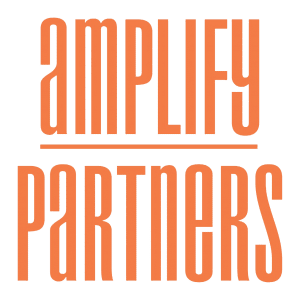A 2-part series on virtual donor engagement in times of Covid-19
There is finally a light at the end of the global pandemic tunnel. The vaccines are being rolled out. And yet, as fundraisers and organizational leaders, it will take us well into the summer and fall of 2021 to reopen our traditional donor cultivation and engagement toolbox.
The question is, how can we turn lemon into fundraising lemonade during this ongoing health crisis? How can we continue to pivot and innovate to build and deepen relationships with those who help our Jewish organizations thrive? How can we expand our toolkits for the virtual environment?
This is an invitation for fundraising professionals, nonprofits, and congregations to build on this year’s successful online outreach to donors and funders. And it invites professionals and lay leaders to go further: to tap into the unique opportunities of cultivating supporters in the virtual space by designing engaging and interactive experiences.
From Online Events To Virtual Cultivation Experiences
As fundraisers, we are in the business of investing in relationships. Only when we build partnerships with donors and funders can we raise transformative gifts for our organizations and the Jewish community. The coronavirus spread came with the need for social distancing and a sudden stop to how we typically engage our partners and stakeholders. Almost overnight, donor cultivation events – parlor meetings, social gatherings, recognition celebrations, retreats, and international missions were suddenly off the table.
Within a few weeks of the COVID-19 outbreak, resource development colleagues at mid-sized and large national and international Jewish organizations started to embrace the online space to reach out to supporters and friends. Webinars and Zoom meetings soon reached the homes of donors and prospects. They helped supporters remain connected to the organizations they cared about most, and introduced them to other causes and nonprofits. Development professionals turned into masterful “Zoom-Hosts” and donors and funders into experienced “Zoomers.”
Nonprofits have invited donors to online events that have overwhelmingly been following a traditional webinar format with speakers and chat Q&A. These web-based programs have served an important purpose: they have allowed organizations to keep in touch with groups of donors and funders, stay relevant, report on mission and COVID-responses, share their unique expertise and perspective, and inform and educate their donor, funder, and lay community. These events have helped effectively guide donors through the initial lockdown months and create a COVID-19 online normalcy in the least of normal times.
Getting Past The Online Novelty
Yet after nine months of COVID-19, the online space has lost its novelty and freshness – the Zoom hype has faded. It did not take long for “Zoom-fatigue” to emerge as a topic of conversation and a reminder of limitations found in the virtual space. Zoom fatigue sets in when donors and prospects “check-out,” feel unengaged and invisible during the online program – and yes, when they are overwhelmed with Zoom meetings and sometimes-impersonal webinar offerings.
A contributing factor to Zoom fatigue is that the Webinar platform lacks the video-on feature for participants. Even when using the Zoom Meeting platform, we have seen an increasing number of cameras turned off during virtual programs and Zoom meetings.
Other reasons why Zoom fatigue has turned into a real phenomenon is that most of the organizations to-date have assigned donors an online backseat. Besides showing up, logging in, adhering to a basic Zoom protocol, and occasionally using chat, organizations have rarely offered donors an active role during online programs. We have turned donors into “Zoom-Watchers” as they moved their donor events online. Organizations recreated a theatre movie and TV-show experience with little room for active engagement. And so, donors and funders are watching online programs rather than participating in them.
The question is: is this all? Can this be all there is for our development activities during COVID-19? The answer: Not at all.
The donor community has yet to experience the true potential of Zoom and the virtual space. There is a need and an opportunity for fundraisers and leadership in Jewish organizations to create new kinds of innovative online experiences for, and in partnership with, donors and community members. Virtual cultivation experiences that energize donors instead of putting them into the “Zoom-fatigue” mode.
The Human Connection In Virtual Donor Cultivation Experiences
It is essential to design new, interactive, and engaging virtual experiences for donors and funders because fundraising is all about the human connection; it is about helping people see possibilities. It is about inviting donors and funders to participate and co-create the virtual experience with your organization.
It is crucial because donors and funders want an experience that meets their expectations. We must ask: what do our donors and funders want? What is important to them – in their lives and when attending an event? We’ve learned that donors want and expect to …
- Have a good and meaningful time
- Connect with peers
- Engage and be part of a community
- Feel good about affiliating with your cause and organization
- Be valued and noticed
- Bring meaning into their lives
- Get excited about your organization’s mission, learn and explore
A donor survey conducted by Cygnus Applied Research (Penelope Burke “Donor-Centered Fundraising”) supports these seven expectations. Donors were asked what they considered the best about donor recognition events. The top best things about donor recognition events according to the study conducted by Penelope Burke:
88% meeting not-for-profit staff/volunteers
83% meeting other donors
81% held at a convenient time
78% pleasing or innovative venue/food
74% made donor feel valued
64% showed how gifts are being used
The findings highlight that personal encounters matter; donors are eager to meet peers; have a good time and feel valued. The seven donor expectations and the research findings inform how we, as fundraising professionals, plan and design in-person events. And they grant as an opportunity to bring these insights into the virtual environment.
Hallmark of a virtual experience – it is donor-centered
The hallmark of a virtual donor experience – and how it differs from traditional webinars and online programs – is its commitment to putting the donor into the center of the experience.
Virtual donor-centered cultivation experiences are interactive and engaging. They invite donors and funders to co-create the online experience. And they are personable. They draw participants directly into the experience in meaningful and thoughtful ways. The power of virtual experiences lies in the ability to bring people together. To connect donors with an organization and, especially, with their peers is a transformative experience.
Donors do not just observe and passively participate. Instead, they become the experience. The webcams lift the anonymity veil and create intimate encounters. This is contrary to typical webinar formats where only panelists and speakers are featured and stay invisible. Virtual donor cultivation events are donor-centered. Every donor is seen, important, and recognized. Those who choose not to attend will be missed and miss, in turn, an opportunity to be welcomed and acknowledged.
Virtual donor cultivation experiences invite donors and funders across generations to meaningfully engage with other participants, peers, and organizational leaders. Thoughtfully designed online facilitation techniques that take advantage of Zoom’s features (i.e., breakout rooms, video features, view options, participant features, presenter tools) humanize the virtual environment, allow participants to build connections, dive into meaningful conversations – and to have fun.
And so, by putting the donors in the center of your online outreach strategy, online donor programs can turn into energizing, engaging, meaningful and memorable experiences for your donors and funders.
(In Part 2 of “Generation ZOOM and the opportunities for fundraising leaders” you will learn about the unique opportunities for organizations to engage donors and funders in the virtual space and five steps to get started)
Tanja Sarett, MA, CFRE, CVF, is a global fundraising consultant, facilitator, and executive coach based in New York / New Jersey. She is the founder of “Synergies Created | Synergies in Philanthropy Consulting” [www.synergiesinphilanthropy.com] and the creator of the “Virtual Donor Cultivation Events” training. Tanja advises nonprofits and funders in North America, Europe and Israel. She is a senior consultant with Amplify Partners and with CARTER.



